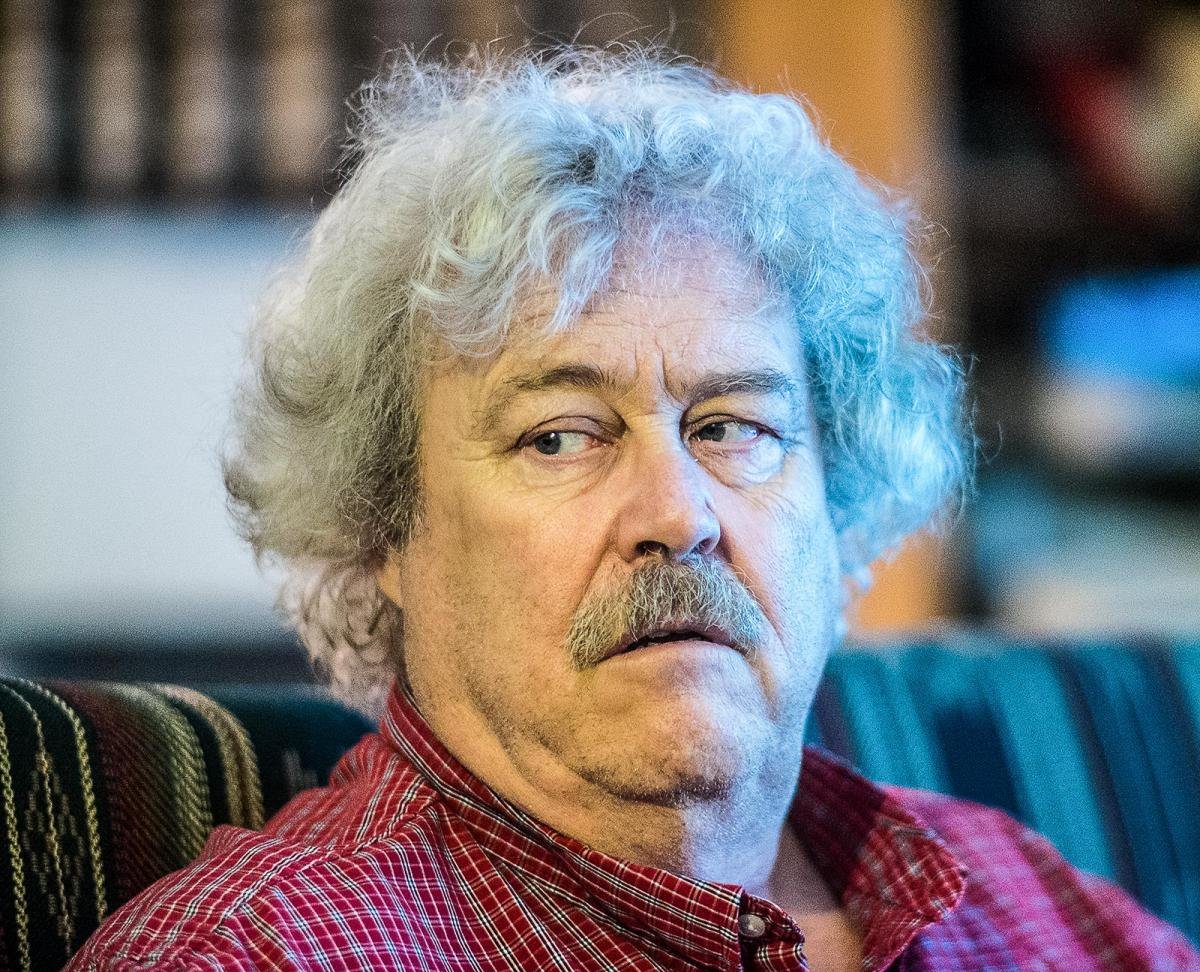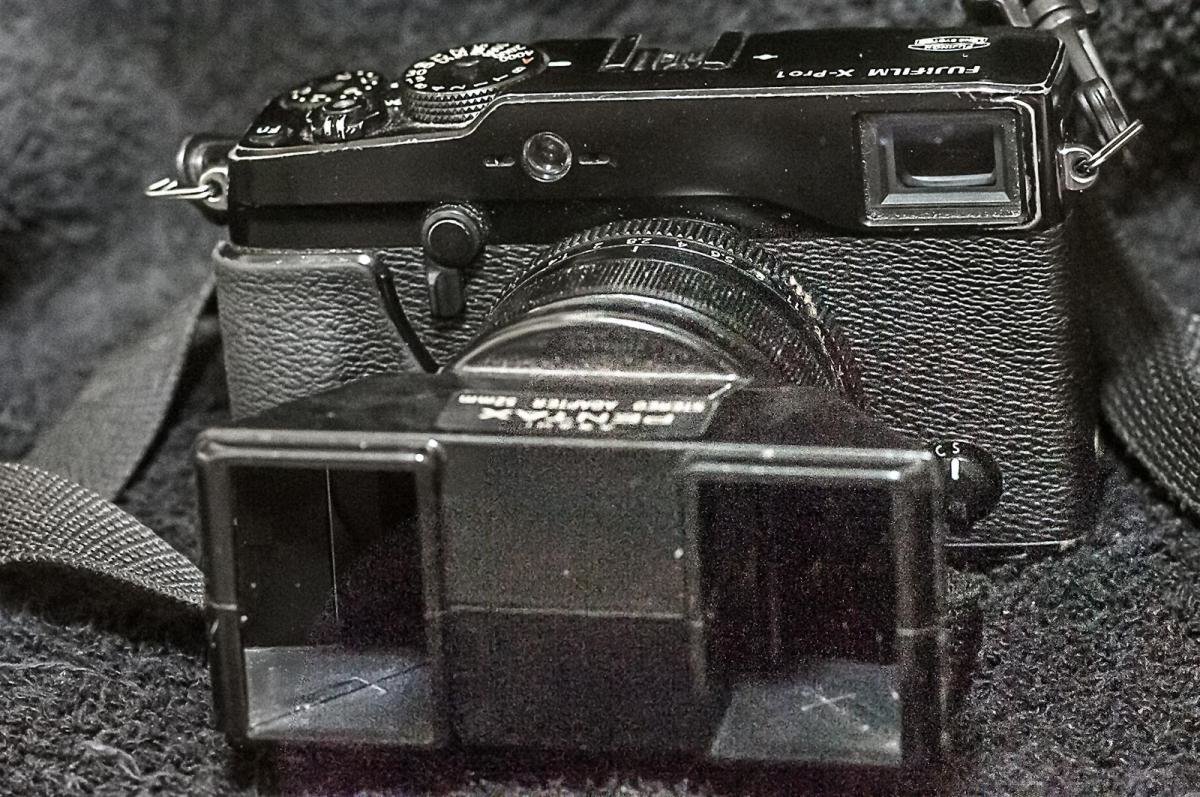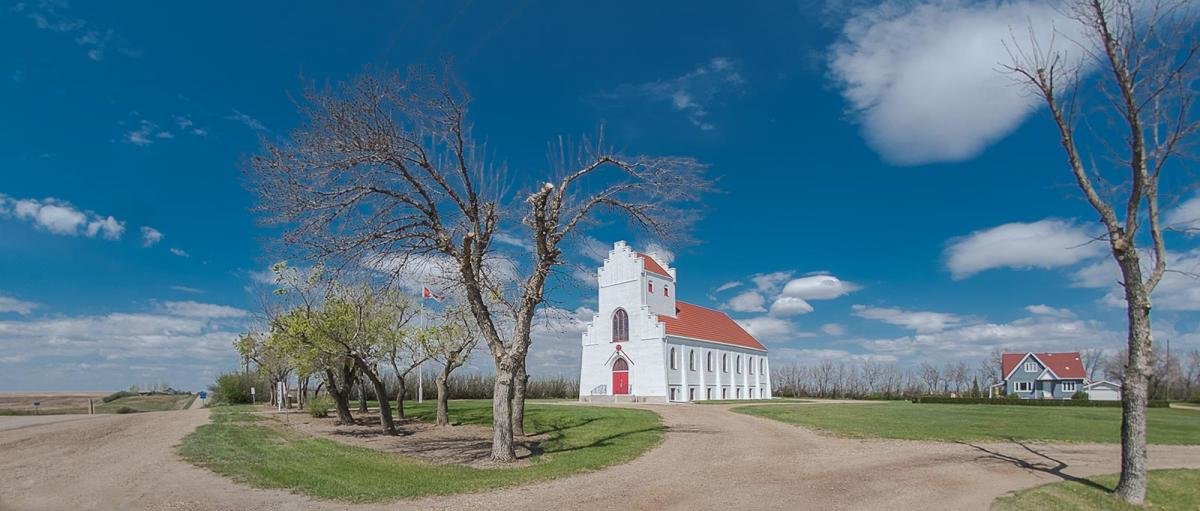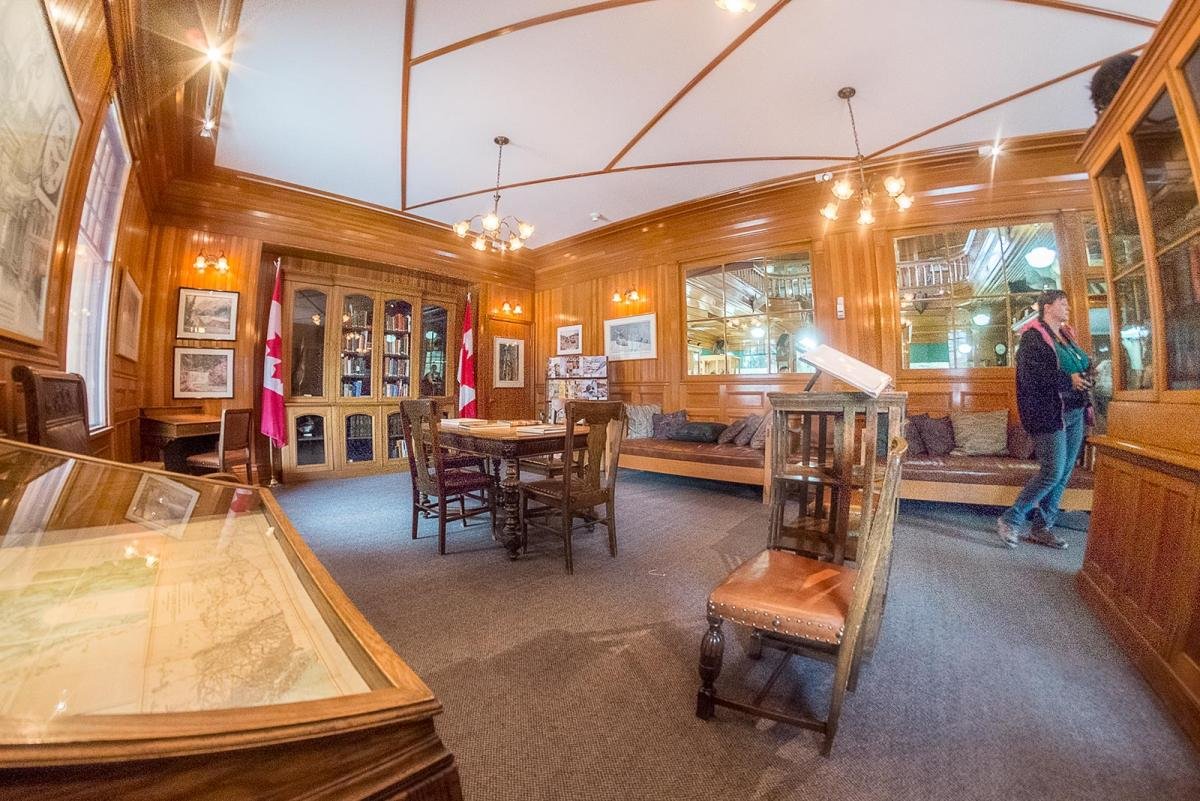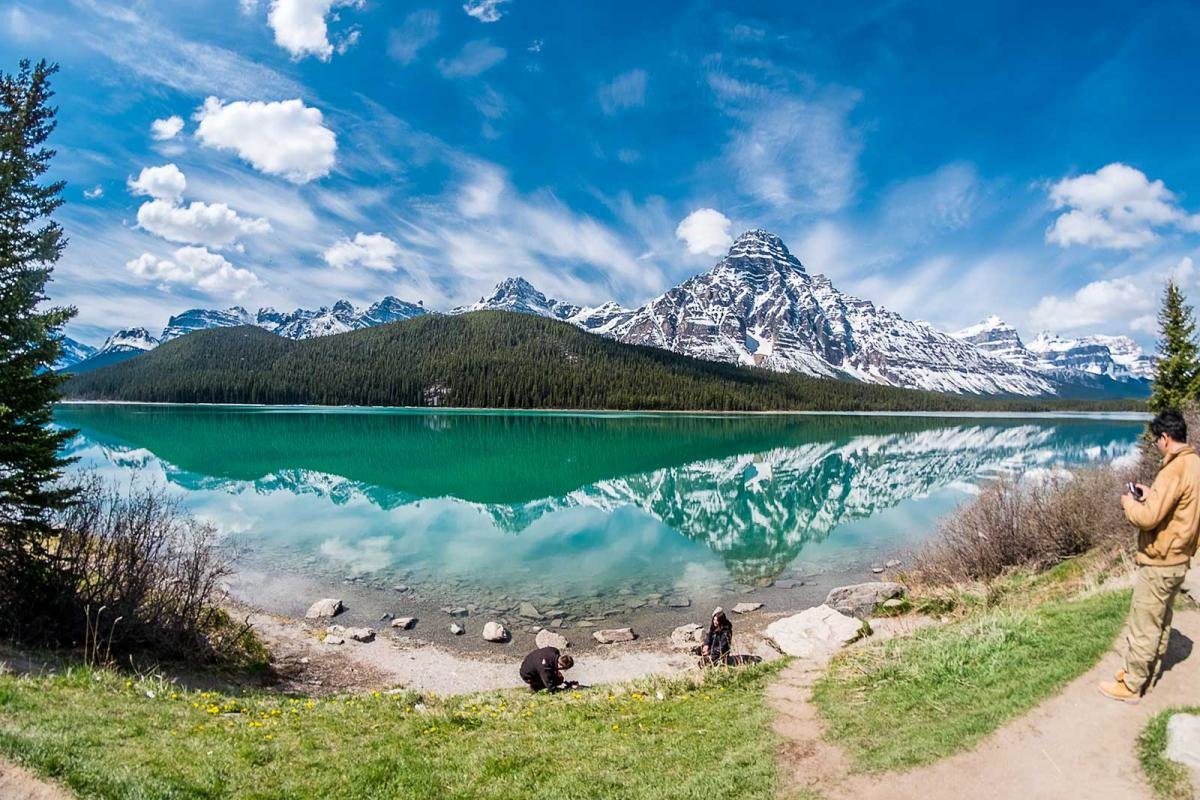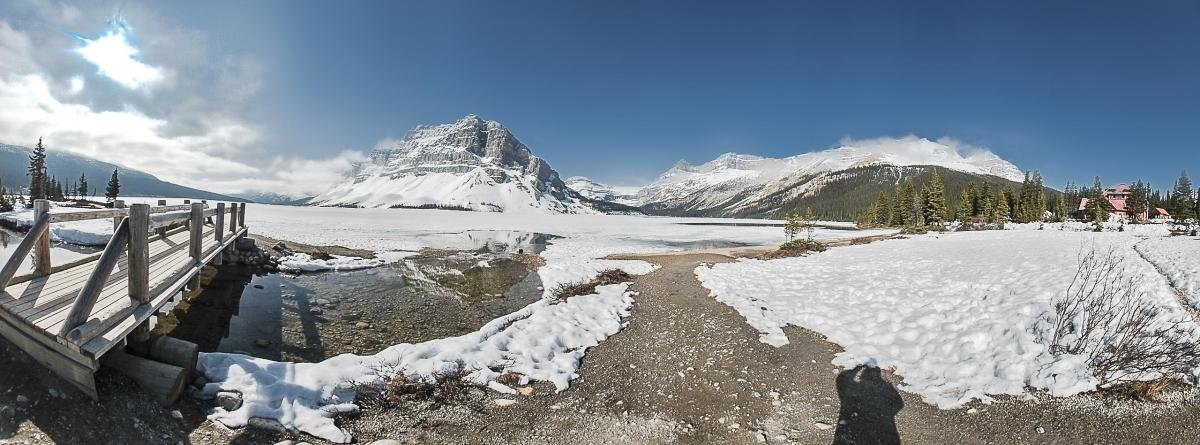-
Posts
195 -
Joined
-
Last visited
-
Days Won
5
Content Type
Forums
Gallery
Store
Everything posted by Larry Bolch
-
Seems like a fair price, with the stuff that was bundled. Purpose-built macro lenses tend to be very sharp, and highly corrected at short distances. Even though Pentax in the film era was regarded as entry-level/consumer-level without the CaNikon cachet, Takumar optics were respected. However, being Pentax would lower the price, and the fact that it is an f/4.0 would also have a negative impact upon pricing.
-
Shorter focal length lenses provide an intimacy that longer focal lengths deny. For formal portraits, certainly the longer lenses are in order since formality is the antitheses of intimacy. The widest of lenses are great for environmental portraits, and as long as the subject is in the central area, distortion is minimal. A shift lens on an adapter offers the ability to move the subject out of the central area if following the suggestion of thirds composition. With people, short lenses do present a challenge, but have the potential to create very powerful relationships between subject and viewer.
-

Technology insanity or is insanitary
Larry Bolch replied to Put a cross's topic in General Discussion
There were reports of a decline in Leica cameras and lenses some decade before digital. From the mid-century to late, they had transitioned from hard-working journalist's gear to mystical collector's items. Leica served this market with special editions that seldom saw the light of day, much less ever did photography. After paying $25,000 for the "450th Anniversary of Bratwurst Edition" with actual smokey smelling sausage casings replacing the usual leather, are you going to take it into the wild? Back then, speculation on forums of actual Leica shooters was that the factory technicians did not expect their products to actually be used, and over time became slackers. In the digital era, the M8 was a scandal. While there was a range of mechanical issues, the IR filter was a joke. Blacks came out blue or magenta. For many months, Leica simply refused to acknowledge it, but users were getting quite noisy. Finally, they admitted there was a minor problem and offered an on-the-lens IR filter for $250. This was met with an equal lack of enthusiasm, considering the price of the camera. Finally, Leica gave two filters to any M8 owner who applied. This was a decade ago, and Leica was never more arrogant. Whether they actually achieved the reliability that put a Leica in most photojournalist's hands half a century ago (including mine) I have no idea. They are still up to their old tricks like removing the color filter array, adding $1,000 to the price and selling a somewhat crippled camera as the Monochrom (no e). A sucker is born every minute. I might add that I had planned to dump my Leica stuff and switch to the much more honest and excellent Contax G2, but then the world went digital. I decided to wait until there was a digital G2, but it was a long wait, with other cameras. Fujifilm did an excellent rip-off of the G2 basics and brought it up to date with the X-Pro1. Add in Fujinons which I loved for large format, and I am one happy puppy. -
It would depend upon the amount of processing involved, the size of the print and the viewing distance. All cameras natively shoot RAW. The internal processing engine applies the camera settings(12-14-bit), then converts to 8-bit JPEG. RAW converters let the photographer apply the settings AFTER the fact and save the image, in any format that is desired. Thus, you can print directly from the 16-bit workspace that Lightroom or Photoshop provides, without every saving as a JPEG. A JPEG is always limited to 256 steps in red, green and blue from zero to maximum luminance. All processing of JPEGs is somewhat destructive, so errors become visible much more readily than with non-destructive editing of RAW with 65536 steps. It is possible that you may not see a difference, or the difference will be great. An accumulation of circumstances.
-
A radical alternative idea, since the 100-400mm may be a very long time in coming. May I suggest you fill the gap with one of the superzoom bridge cameras. Even though the sensor is tiny, current technology has allowed it to produce unexpectedly good results, specially in good light. Long zooms don't really have much application indoors—concert photography, perhaps. Bridge cameras are fully adjustable, and many have nice features like WiFi control and GPS for traveling. Compared to the likely price range of the 100-400mm, they are highly affordable. They can be anything from 600mm FOV to 2000mm maximum. I have the 2000mm and it is really remarkable. Image stabilization is awesome allowing handheld shooting at well under 1/200th of a second. It solved a lot of problem shots that were beyond my X-Pro1 kit and D700 on a recent long photo trip. Traveling in unfamiliar territory makes the GPS invaluable. Certainly when the 100-400mm arrives, on an X-camera both versatility and low light image quality may well justify the price. However, the unique qualities of the bridge camera are likely to keep it as part of the arsenal. Few photographers have ever seen a 2000mm lens, let alone shot with one.
-

Metabones Speed Booster adapter on Nikon 105mm f2.8 G lens?
Larry Bolch replied to Blacksheep's topic in Fuji X Lenses
No, but it works very well with the 105mm f/1.8 AI-S on my X-Pro1. With the extremely shallow depth of field wide open and with focus peaking, focus pretty much pops in and out. I see no problems whatever with the 105mm Micro. Of course, everything about the lens is manual. This was shot wide-open in very little light. -
Fuji had done a very logical sequence of lens releases. The X-Pro1 and the initial three lenses were the classic photojournalist's kit. It made the X-cameras immediately viable. Since then, they have added a "kit lens" beyond the quality of any other on the market. A few very useful zooms followed by high-end zooms in comparable fields of view with Canikon. Amazing in so few years. With the exception of super-telephotos, we are well covered. Now it is a matter of more specialized lenses filling in the perceived gaps. We have a "normal" lens and it is superb. An f/2.0 is a nice bonus for shooters looking for a lighter, cheaper, more compact lens. A few years down the line, a f/0.9 might find a few sales. The f/1.4 is a pro-am workhorse. A focal length of 135mm is not all that popular, but enough are being sold to keep them in production. Fuji's 90mm has the same FOV and is apparently a superb lens. I have shot with 135mm lenses on Niko and have a 90mm Canon Serenar for the X-Pro1 in a Leica screw mount. Not good for Fuji and not a focal length I favour. However, it is a good lens beyond the basics. Happily, the X-mount is being served by other lens makers. Nice to have Zeiss on board and the Samyang family. I recently traveled with the Samyang 8mm, using it as a super-wide rather than capitalizing on its distortion, and came off with some spectacular shots. In the history of photography, the f/2.0 will find quite a bit of favour, but it is certainly in the third or fourth wave of lenses.
-
It is a problem turning a normal camera into a stereo capable camera, but not a kludge. There are a variety of devices such as the one illustrated here. They work, but with limitations. Since they place the images on a single frame, they demand vertical imaging. This one was made by Pentax, and is of very high quality, with front surface mirrors and rigid geometry. It only works well on a normal lens—around 50mm with film, and with the 35mm Fujinon. Since both images are in the same frame, it effectively sets the field of view at double the lens's focal length. No way around it. (Pardon the image quality. Late at night. Shot in the kitchen with the kitchen light, not in a commercial studio.) A far better solution is tracking down a used Fujifilm Finepix W1 or W3. These are neat, pocket-size cameras designed to be fully featured stereo cameras. They work very well and have a fanatic following. Why reinvent the wheel when Fuji has already given us the solution?
-
Not my first fisheye, so I think it will continue getting considerable use. The reason, is that I am not using it to shoot typical "fisheye" shots, but much more as a superwide or panoramic lens that has curvature which I don't emphasize. I have tested it using the X-Pro1's sweep panorama, and stitching worked! I have also tested stitching in the new version of Adobe Camera RAW with dramatic results. I find it does very nice interiors with all four walls, when shooting from a corner. Landscapes are quite dramatic as well. Photoshop CC has tools that can pretty much straighten everything, but for the most part, I don't bother.
-
Did a bunch of testing a number of years ago. 360 vs 720 ppi—no visible difference, nor is there any visible difference down to 240ppi. At 180 vs 360 ppi you could see a slight difference at reading distance, which vanished at arm's length. Below 180 ppi, the difference becomes more easily visible, but only if there is a substantial difference in resolution. There is simply no point when it falls apart. Even a print at 90 ppi looks sharp and detailed as long as there is not a high-res print next to it. At 90 ppi, you could print 54" × 36" from an X-camera exposure. The main factor in very large prints is your eye. At a distance where you can see all of the print, they eye is VERY forgiving. For decades Kodak had 18' × 60' photo-murals high above the concourse of New York City's Grand Central Station. Some were even shot with 35mm cameras. Close up, the dye-clouds were tennis-ball size, but from the floor, the picture was sharp and clear. In my own case, with my first bridge camera, I shot an excellent portrait of a Macaw and a friend wanted a print. This was a 3MP Coolpix 990 with a resolution of just 2048 ×1536. He had it printed at 24" × 36". No one would mistake it for an 8×10 contact print, but even close up, it was quite detailed—remarkable since it was down to only about 57 ppi. One could easily see the fibrous nature of the feathers when eyeballing the print. However, don't just take my word for it. Test for yourself. You do not need to make huge prints to test. In my comparison tests, I printed 5×7s side by side on a letter-sized piece of paper for easy comparison.
-
The 60mm f/2.4 goes to 1:2 and the image quality allows for considerable cropping. I also have my old 55mm f/2.8 MicroNikkor that works just fine and I expect does 1:1 or better. It came with a substantial extension tube which also works fine. That said, I am not doing scientific work, so I use the 60mm—which is also a superb general photography lens. Now that Photoshop CC2015 has implemented HDR in Adobe Camera RAW, it is used in a high percentage of my work. Gone are the haloes of a decade back that justifiably drove many people away from HDR. Now the results simply look normal, albeit with significantly more highlight and shadow detail. Unless I want to manually adjust exposure, my X-Pro1 only auto-brackets ±1.0EV, which is certainly useful, but I would prefer a longer range. This was shot about a month ago, and you can see that even with such a short bracket, I was still able to hold a lot of detail in both the clouds and the forest. Not even a hint of a halo!
-
I echo London Drugs anywhere in Western Canada. When the X-Pro1 was announced and preorders became available, Vistek, Henry's and other major stores had hundreds of orders. For all of their stores combined, London Drugs had only 11 orders, so I got my X-Pro1 within a day or so of their arrival in Canada. I live about a five-minute walk away from the closest store, and over the years, there have been many well-informed enthusiasts behind the counter. Certainly there were also people who just know how to ring up sales. The person I have been dealing with over the past decade or so, was primarily a medium-format shooter and very well informed. Since there seems to be a very low turn-over in staff, it is possible to build a long-term relationship. Also in their favor, they will match any legitimate advertised price in Canada, and you save shipping costs as well.
-
Horrors! Three lenses of normal focal length! What is Fuji thinking? Well, I just checked the B&H site and there are 33 lenses between 45mm and 60mm that fit Nikon, and 20 that fit Canon. Even humble Pentax has six. Fujifilm set out with a pretty impressive basic roadmap of lenses and has done a reasonably good job of delivering. We are beyond the basics, so why not a super fast lens highly corrected for wide-open shooting like the Leica Noctilux and the Noct-Nikkor? Both were superb back when ISO800 was considered a super-speed film. Why not a water resistant low-speed, but high quality normal, or one that covers all aspects of general photography quite well, like our present f/1.4? An f/2.8 pancake would be a lovely street lens. The basics have been well covered for a year or more. Now fill in any gaps and give us choices to match our needs.
-
Why do you need a lens now? Answer that, and the choice should be obvious. Base your choice upon what you intend to do with it, not some supposedly superior lab tests. A 23mm is useless as a substitute for a 16mm—and vice versa—no matter the quality. As a compromise, there is also the very useful 18mm, comparable to a 27mm on film, tiny, and quite reasonably priced. However, let the subject matter and your way of capturing it, guide you.
-
A Speed Booster can fill the gaps in the X-mount lineup. This is specially true if one has legacy lenses. I really like the 105mm focal length, and bought Nikon's f/1.8 back when I was doing a lot of shooting for the music industry. It is highly corrected for wide-open photography and with the Booster becomes an f/1.2 with the full 105mm coverage, as if it were on a full frame camera. The Speed Booster acts like a tele-extended in reverse. Imagine the 56mm Fujinon as a 70mm f/1.2. I also have a 28mm PC-Nikkor shift-lens that works fine. The 105mm was the primary performance lens since I was able to work within the barrier, but on occasions where I needed a longer lens I covered it with a Vivitar f/3.0 200mm Series 1—again sharp wide open—with a lovely f/2.2. On the other hand, I just bought a Samyang 8mm fisheye. It does come in an X-mount version, but I chose it in an F-mount with a removable hood. On my D700, it more than covers the frame vertically, but lots of space on each side of the circle horizontally. Most of the time, I will choose the X-Pro1, but the D700 is also an option. I was delighted to find that the X-Pro1 in Panoramic mode fully corrects for fisheye curvature and the resulting image is spectacular. The Speed Booster duplicates what I get on the D700, so is not terribly useful. The fisheye was so wide that I could not help but include my shadow.
-
Give or take a couple of millimeters, medium-format in digital terms is around 33×44mm. In film terms, medium format began with 45×60mm. Roll film did come in 127 size mostly 40×40mm or 40×30. 127 was somewhat of an oddball size, located between 23mm and medium-format, but not considered medium-format. It is a bigger step from APS-C to full-frame, than it is from full-frame to medium-format. Were it actually medium-format, there might be more reason for excitement.
-
I can not find anything online to refute Fuji still building the Hasselblad. Word is that currently all Hasselflex lenses are in fact, rebranded Fujinons. If this is indeed true, it proves that Fuji is well capable of producing an MF camera, but may also be contractually blocked from doing so by Hasselblad.



